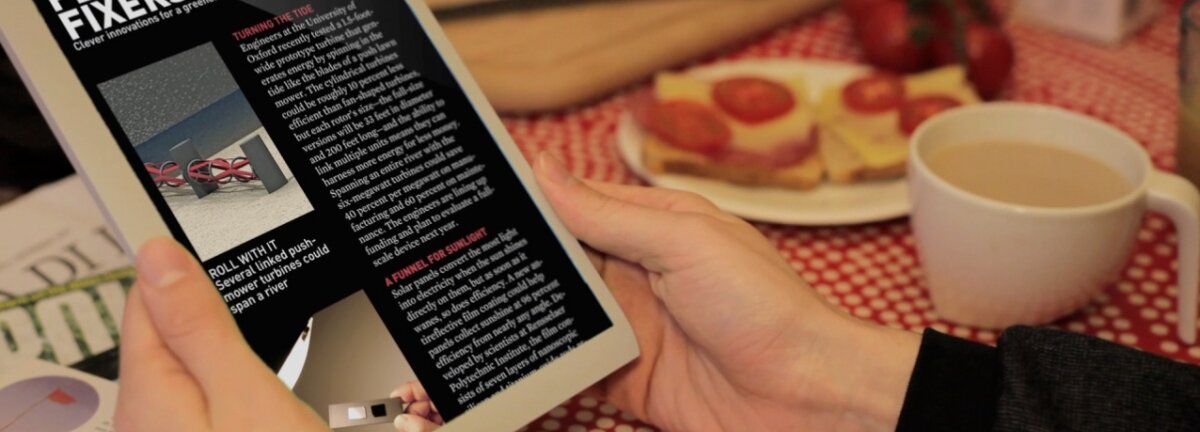Berg on designing the future of the magazine

Bonnier are a 200 year old family-owned Scandinavian publishing company with a significant portfolio of US magazines. Around the end of 2009 they realised that magazines were evolving. Bonnier believed that there would probably be a couple of dozen tablets out over the next two years (by the end of 2011), and that would mean that way people consumed magazines could radically change. They came to us to help them understand what the future of magazines looked like.
A magazine can now be written by four people working remotely, from any location. So our design had to take into account business realities as well. We did a lot of design work to understand the business, the potential of the technology, customer insights and beautiful design – you need a team to bring that together and communicate it well.
Apple saw our video and invited Bonnier to a media event in January 2010 which happened to be the announcement of the iPad.
We tested a new concept, called Mag+, by making a film (see below) that demonstrated how people might interact with magazines on tablets in the future. This video was actually only intended for internal use initially, but then Bonnier decided to release it publicly. That was a good idea - it positioned them as a forward-looking company, while allowing them to gauge responses to the the concept. It also stimulated a larger conversation about the future of magazines.
As a consequence of making the video public, Apple saw it and invited Bonnier to a media event in January 2010 which happened to be the announcement of the iPad. Bonnier called us again and told us about it. Up until that point nobody believed there would be a full-screen, multi-touch, full-colour tablet out imminently – but in fact it would be out in sixty days. At that point, my team rapidly switched from design-as-strategy to design-as-activity.
We ended up writing an app which could hold lots of magazines on the one platform, so Bonnier could start porting their magazines to it. We spent the summer scaling it up and then doing handover material to move it from R&D to product.
Bonnier took it on, added a few of its own magazines to the platform, opened up the APIs and it became its own thing. To date there are over 1000 magazine apps using the technology.
In this video Berg's Jack Schultze explains how their app was used by Popular Science magazine to launch their iPad edition.
There's a number of factors that made our collaboration with Bonnier such a success, but a key factor has to be our relationship with Sara Ohrvall, Bonnier's Director of Global R&D. Sara is astounding, a really forward-looking executive. One of the wonderful things that Sara did was to act as an advocate or ambassador for our work– and kind of become a shield within the organisation. So while we were doing our work with our very small team through those early workshops, she and her team were sheltering the process from a very large organisation. It was critical to have someone at a senior level who understood the current business, and who could also visualise an alternative future.
When you’re looking at the threat that digital poses to traditional business, and neither the scale of that threat - nor the scale of the opportunity – are apparent, you need ways to figure that kind of stuff out. Without having someone senior enough to understand the business strategy and how to affect it, you’re not going to get good answers – that’s the lesson I take from Bonnier.
Matt Webb is Principal and CEO of design consultancy, Berg.
Subscribe to our newsletter
Want to keep up with the latest from the Design Council?
